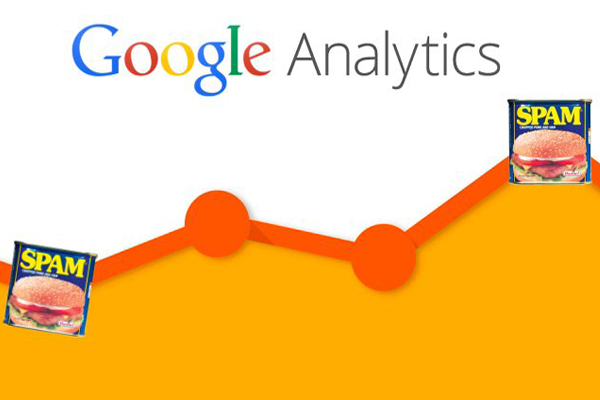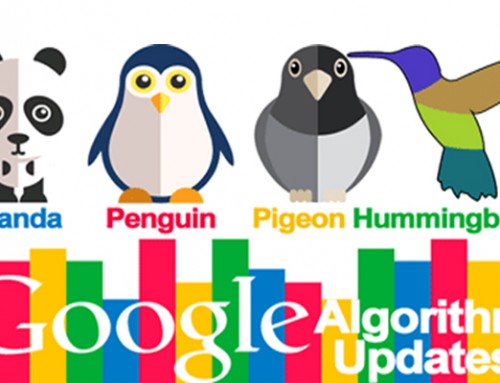Have you ever noticed questionable numbers or odd referral sources in Google Analytics and wondered what was going on? If this sounds familiar, there’s a high likelihood that you’ve fallen victim to Google Analytics spam. While far less widespread than other forms of spam, every year more website owners approach us for ghost spam help. Here’s what you need to know if you suspect that your website is the target of Google Analytics spam.
Have you ever noticed questionable numbers or odd referral sources in Google Analytics and wondered what was going on? If this sounds familiar, there’s a high likelihood that you’ve fallen victim to Google Analytics spam. While far less widespread than other forms of spam, every year more website owners approach us for ghost spam help. Here’s what you need to know if you suspect that your website is the target of Google Analytics spam.
What is Analytics Spam?
Analytics spam is a tactic that spammers use to alter your analytics data. It often results in traffic data that is grossly inflated or under reported. However, it can also manifest itself in the form of false referral sources. Spammers utilize these techniques for a number of reasons, they include driving traffic to untrustworthy websites, harvesting email addresses, piggybacking off of your search engine authority and etc.
Analytics spam is also referred to as referral spam or ghost spam. Although referral spam doesn’t typically result in direct harm to your website, the end results can often be just as problematic.
Implications of Ghost Spam
Analytics spam can result in a number of negative ramifications, but the primary issue is that untrustworthy analytics data can handicap your ability to make sound marketing decisions. Not only that, but referral spam can also cause you to suffer from:
- Drop in Search Engine Rankings – While referral spam generally doesn’t have a direct impact on SEO, there is an exception. If your web analytics data is public, then your referral sources – including the ghost referrals – are also visible to the entire world. The spammers love this because it allows them to to siphon your SEO authority and funnel it to their own spammy sites.
- Computer Viruses or Malware – If you click a false referral source link and land on a page that is crawling in malware or viruses, you stand to experience significant losses in computer hardware.
- Bruised Reputation – If your published access logs contain referral spam, SEO isn’t your only concern. Your reputation is also at stake. For example, if the spam contained links to adult sites, your brand could be tarnished.
How to Recognize Google Analytics Spam
Analytics spam is a lot easier to recognize than one might think. In fact, the tell-tale sign is either 0 percent or 100 percent bounce rate. To make the job of finding spam referrers easy, simply download your referral report from Google Analytics and review it line by line – paying special attention to bounce rates.
Some of the common ghost referrals are:
- buttons-for-website
- darodar.com
- Econom.co
- ilovevitaly.co
In addition to the referral URLs that show up in your data, abnormal search terms can also be an indicator that your analytics data is being spammed. For instance, one of the most widely reported ghost referral keywords is ‘vitaly rules google’.
Before you can address the situation, it helps to understand what you’re really up against. When it comes to referral spam, there are three types of spam to worry about:
- Ghost Referrals – Ghost referrals don’t actually visit your site. These referrals are common and can appear in your results quite often.Not only do they use a series of tracking IDs, but they can also generate fake page views. The downside of ghost referrals is that you can’t block their visits. Since these referrals typically don’t visit your site, the only recourse you have is to filter them.
- Creepy Crawlers – Creepy crawlers are bots with questionable intent that capture information. This form of spam places malicious viruses, such as Trojan horses, on your computer.These viruses have access to your computer and all of your files when you visit the referral site. You should never visit the referral site.
- Bots and Spiders – Bots and spiders are usually good things. Namely because they help organize the Internet by indexing websites. However, in the wrong hands they can wreak havoc on your analytics reporting. A key differentiator between good bots and bad bots is that good crawlers usually identify themselves to your servers, whereas spam bots intentionally conceal their identities.
How to Address Ghost Spam
There are a series of steps that you can take to address the situation.
- Use the bots and spiders filter in Google Analytics
- Sort the statistics according to their bounce rate.
- Look for suspicious information (100 percent referrals or no bounce rate).
- Do a Google search to determine whether it is legitimate or whether others have already identified it as a spammy site (remember NOT to visit the site).
- Tell Google Analytics to stop recognizing offending domains as a referral sources by adding the domains to the Referral Exclusion List.
- Block the IP addresses of bad referrals by creating IP filters.
- If you are publishing your access logs, you may want to make this data private.
Although analytics spam can strike any website at any time, the good news is that you don’t have to be hurt by it. Armed with the information above, you’re in a much better position to ward off the effects of referral spam than most.
Uncertain as to whether your analytics data is being spammed by ghost spammers? Contact ROI4my.com for a complimentary Google Analytics audit today. Post your comment below for your free evaluation.





FOLLOW US